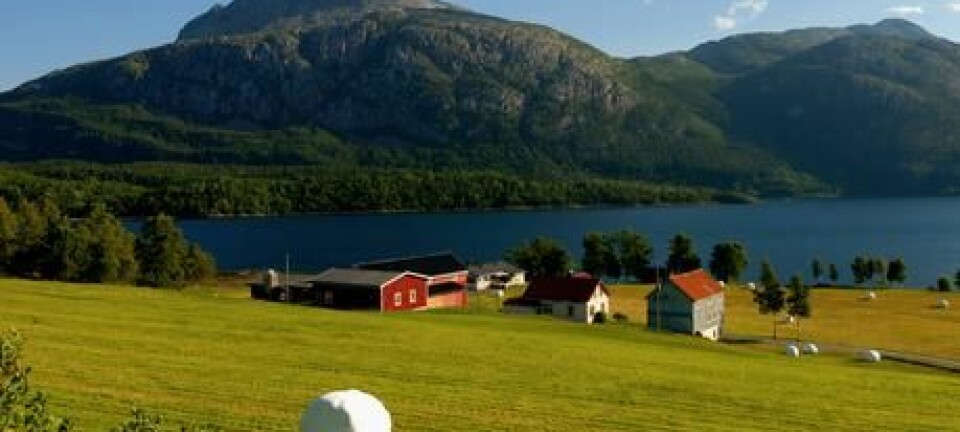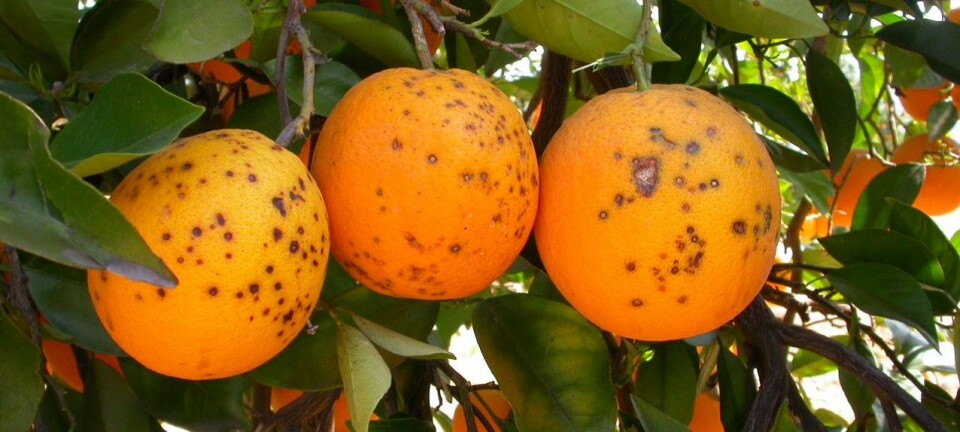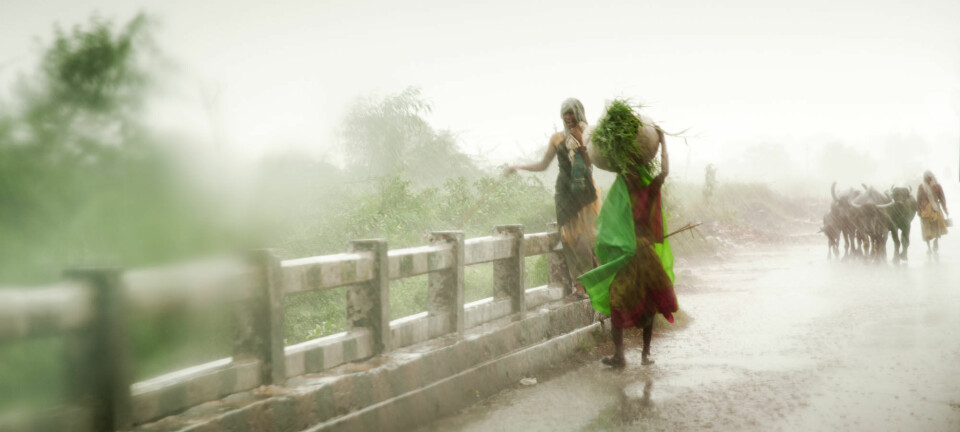This article was produced and financed by Norwegian Institute for Agricultural and Environmental Research
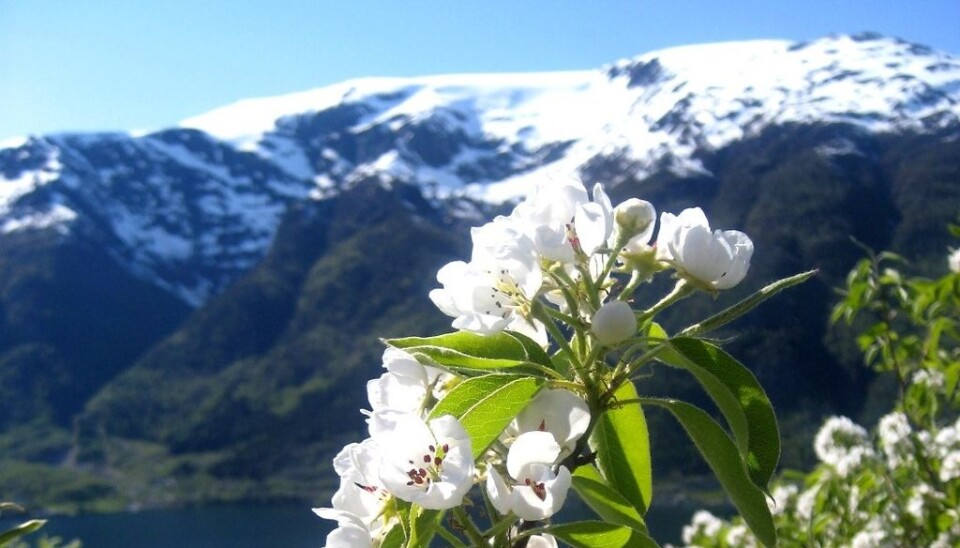
Climate change could lead to more Norwegian fruit
Norway is one of the northernmost countries where fruits and berries can be grown commercially. A warmer climate could provide better conditions.
This year, the fruit trees in Ullensvang in Hardanger blossomed one month earlier than the previous year
A mild winter and spring have caused the earliest blossoming in Norway for ten years, starting around the 22nd of April. Last year, the cherry trees did not blossom before 22nd of May, but this was considered a relatively late spring.
“A long time ago, back in my childhood, cherries and plums usually blossomed in mid-May,” says senior researcher Mekjell Meland from Bioforsk, the Norwegian Institute for Agricultural and Environmental Research.
“Apart from last year, blossoming has taken place in early May for the last few years, so people are starting to think of this as normal,” Meland says.
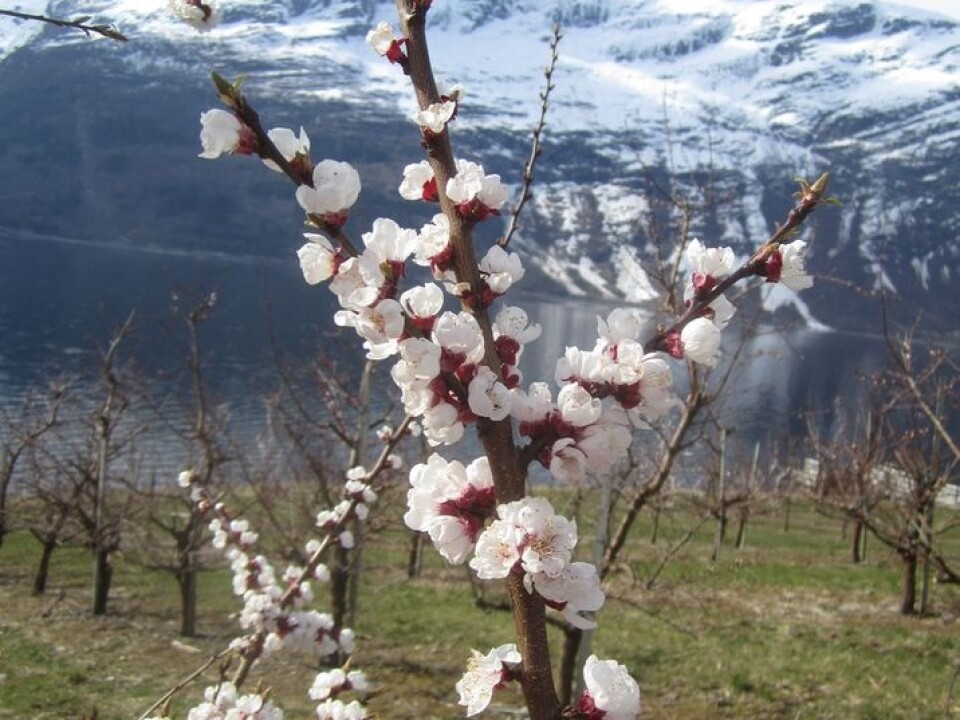
He points out that from a scientific position it is not possible to establish whether this is normal. What is considered normal is calculated from a period of 30 years, and the scientists do not currently have data going back that far.
However, it is not so long until they will have sufficient data to say something about what is normal. Throughout 25 years, Meland has recorded dates for bud break, flowering and defoliation of different fruit species and varieties.
Can present challenges
One of the benefits of early blossoming is that the growing season expands - but it can also present challenges.
“The flowers freeze when we get cold weather during blossoming. In the worst case scenario, this leads to little or no fruit,” says Meland.
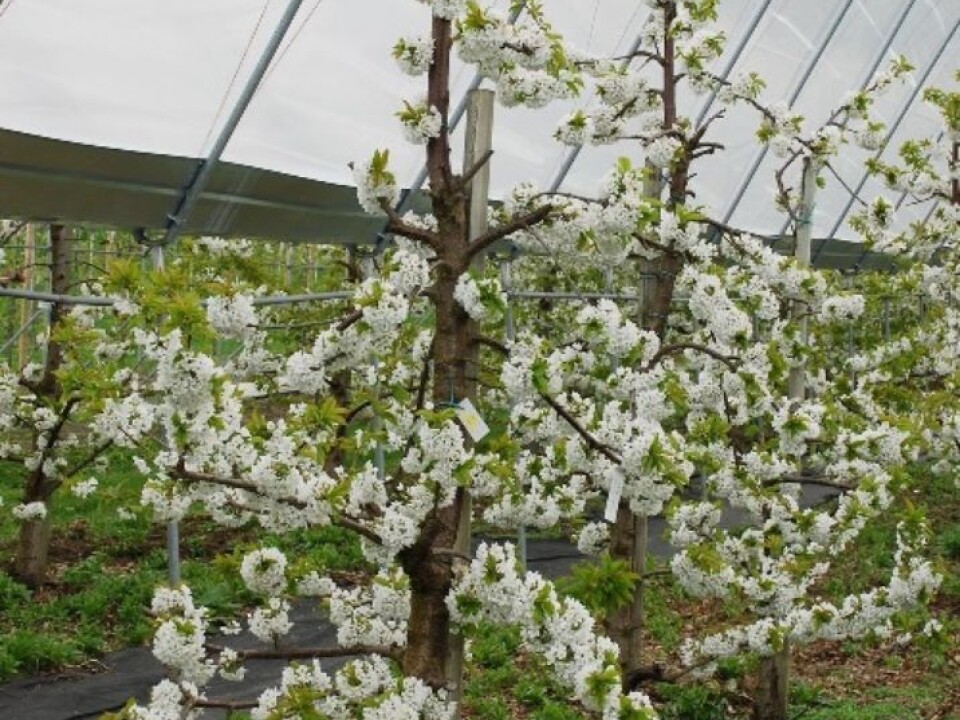
This year, the night temperatures during the first days of May were low in fruit growing areas.
In Telemark, there were four nights with freezing temperatures, which means fruit farmers can expect some frost damage.
“We assume things are okay, but this remains to be seen later,” says the researcher.
In stores early
If the flowers avoid frost damage, consumers are likely to find Norwegian cherries and plums in stores earlier than usual.
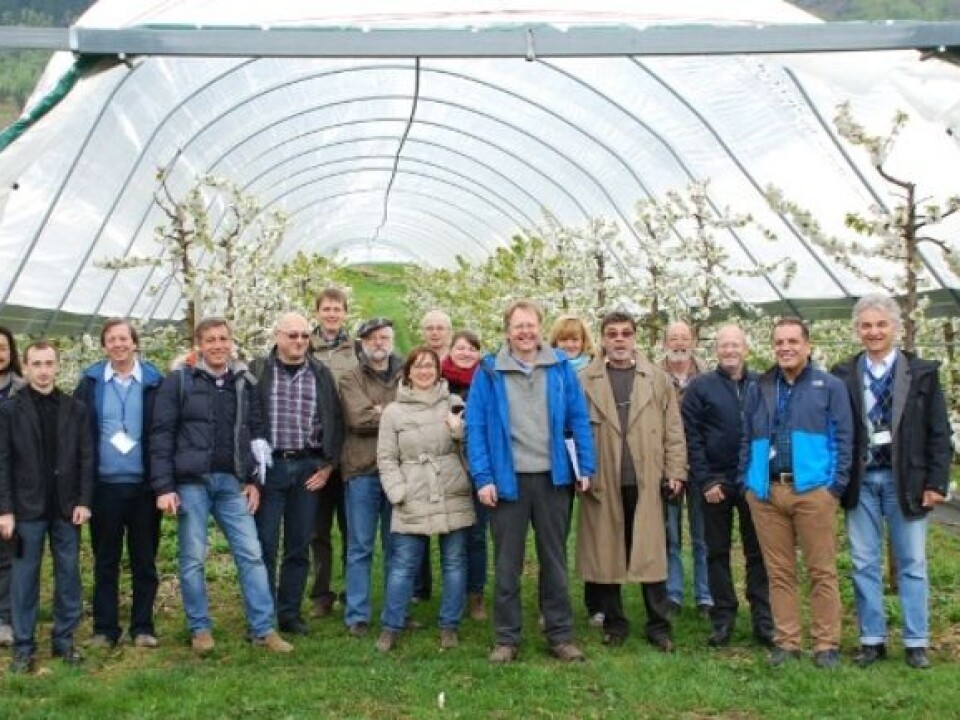
According to Meland, it is difficult to predict when this will happen. However, the first plums which usually ripen in early August could be ready in late July this year, provided that the summer weather is good.
If the summer is cool, the head start is likely to be evened out.
Longer growing season gives more fruit
All in all, the effects of climate change on cherries and other fruit production in Norway are mostly favourable
According to Meland, a longer growing season will open up opportunities for growing a greater number of types and more demanding varieties. Better growing conditions and higher temperatures could also increase crops.
On the negative side, warmer temperatures could lead to greater problems with fungal diseases and insect attacks.
But Meland says he is still mostly optimistic on behalf of the Norwegian fruit producers.
“We have run cultivation trials with apricots and peaches here in Ullensvang. Currently, we they have been partly successful, but in the future we might be able to do it properly.”
Milder winters cause problems further south
The future outlook is not as positive for countries further south in Europe. Mild winters could result in a lack of blossoming.
“It is the countries furthest south that will have the greatest problems with fruit if the temperatures rise. In warmer locations, it will be necessary to develop varieties that require less cooling during winter and that can withstand more heat in the summer,” says Meland.
He explains that trees need a resting period to be able to develop the following spring. If the trees do not get a cooler period, they will not blossom.
“Fruit growers in Norway don’t think about this, as it is not a problem here - we have enough cold weather during winter.
Typically, trees require at least 1000-1500 hours below seven degrees Celsius in the winter in order to blossom normally in spring.
Climate database for European cherries
Bioforsk in Ullensvang is carrying out trials on different varieties of cherries and other fruit species such as apples, pears and plums. Unlike a lot of other fruits, cherries are unique in Norway in that the same cherry varieties can be cultivated here as in other places in the world, including French, Italian, American and Canadian varieties.
This is due to the short development time from blossoming to mature berries. The situation is, for example, the opposite with apples, which has a much longer development time from the blossoming to maturity and therefore requires varieties specifically adapted to Nordic conditions.
Recently, Meland gathered a delegation of 20 fellow researchers from 12 European countries, to discuss flower development in cherries in Europe.
The researchers shared experiences and began work on a common database for registering the blossoming and development of the same cherry types in various locations in Europe.
The database will also include climate modelling.
“Then we will be able to see, for instance, what impact there could be when the temperature rises with two degrees. It will help us to predict what problems could emerge through early blossoming and what we need to be prepared for,” explains Meland.
------------
Read the Norwegian version of this article at forskning.no
Translated by: Siri Elise Dybdal







